Is Blogging Dead And Are Blogs Still A Thing In 2024?

After unfolding in the internet industry, there may be rare few who aren’t aware of the search engine named Google and YouTube.
Both of them opened a gigantic amount of opportunities for content creators by monetizing their content in exchange for the value that they provide.
Google in the form of blogging and YouTube in the form of creating video content on YouTube.
But after uncovering the current statistics, YouTube has become the second most valuable social media platform in the world with billions of users every month (source).

This has led to a mental war of blogging vs YouTube in the minds of creators who want to enter either of them.
With the rise in consumption of video content, bloggers are afraid whether blogging will survive or it’s the end.
To solve the confusion of whether blogging is dead or not, we have come up with this definitive guide.
So, if you want to know whether blogs are still a thing or not, then you will love this new guide.
Let’s begin.
Is Blogging Dead And Do People Still Read Blogs?
No, blogging is not dead right now and favorably it will not die even in the years to come.
As data do not lie, let me show you some proof about why blogging will thrive instead of dying.
According to Optinmonster, around 408 million readers read more than 20 billion pages.
There are over a billion live websites on the internet as of now and the number is gradually increasing (source).
Google gets over 80 billion searches every month out of which more than 80-85% of searchers click on organic results (blogs) rather than the paid ads (source).
Not only that, US users like to read blogs 3 times more than they read emails.
And do you know about Pinterest?
It is one of the world’s largest image search engines where the major traffic is redirected to blogs.
Even if you think independently, you will come to know that blogging will not die.
Why?
Search engines like Google run through blogs.
Therefore, we can easily assume that blogs will stay till there are search engines.
People still read blogs.
Top pages in YouTube may include videos that are not up to the exact intent as the algorithms are not that strict.
But on the other hand, the top pages in Google tend to solve the users’ problems more often.
This is because for any article to reach the top page, it needs to comply with over 200 ranking factors.
That’s what makes results from Google the most reliable ones.
Instead of degrading, blogs are only evolving (more on that later).
As blogging is evolving, we as a blogger need to keep ourselves updated regarding all the changes that occur throughout the market.
On the other hand, you and also need to lose some old-school tactics that worked very well in the past but are dead now.
Let me show you some of the things that are dead in blogging.
What’s Dead In Blogging?
Here is the list of four things in blogging that you should get rid of as soon as possible.
1. Personal blogging
Personal blogging or so-called blogging as a hobby used to work great initially.
At that time, there was a good chunk of the audience to read about your personal life because there was no option.
Today, we have YouTube for that.
And that is the main reason why personal vlogs work great on YouTube.
People don’t have time to read content that is all about themselves and their surroundings.
And videos do a great job of entertaining the audience without making them monotonous.
If one of your reasons to start a blog is to make money, then personal blogs will be a total waste of time.
Reason?
How will you monetize your blog without providing any value or solving your readers’ pain points?
Thus, if you want your blog to work for you, then work on a strong niche that has multiple monetization mediums.
2. Not understanding user intent
Arguably, user intent is one of the core ranking factors by Google.
And to be honest, most of us overlook this significant step.
User intent as the name suggests is understanding what the searcher is trying to ask and optimizing the post around that intent.
There are mainly 3 types of user intents:
- Informational
- Navigational
- Transactional
In informational intent keywords, the searcher is trying to look for information regarding a particular thing.
In short, he/she is trying to gain education from scratch around that topic.
Here’s an example of an informational keyword: “How to tie a tie”.
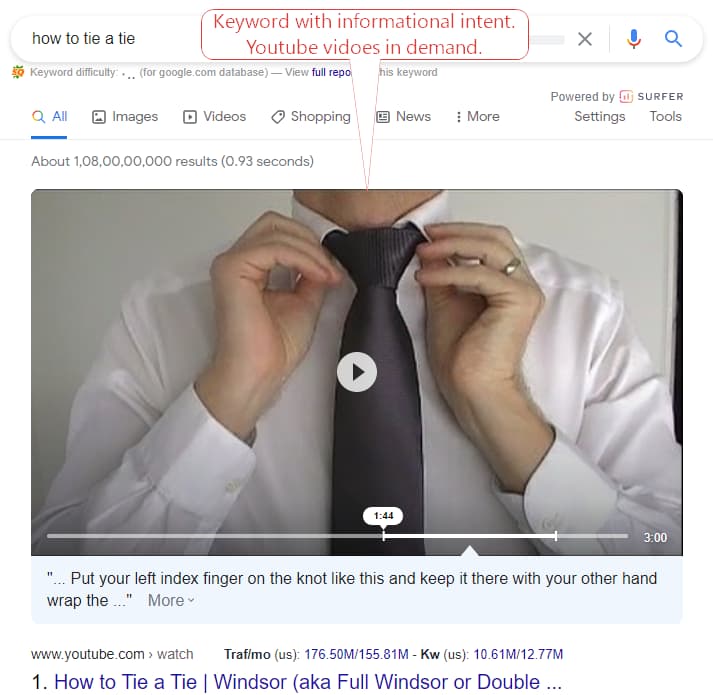
In navigational keywords, the user is aware of the site. He/she tries to find certain information from that specific authoritative site.
Put another way. A searcher is already conscious of the site. Therefore, he/she wants results only from that site rather than some random blog.
For example: “Facebook Sign Up”.
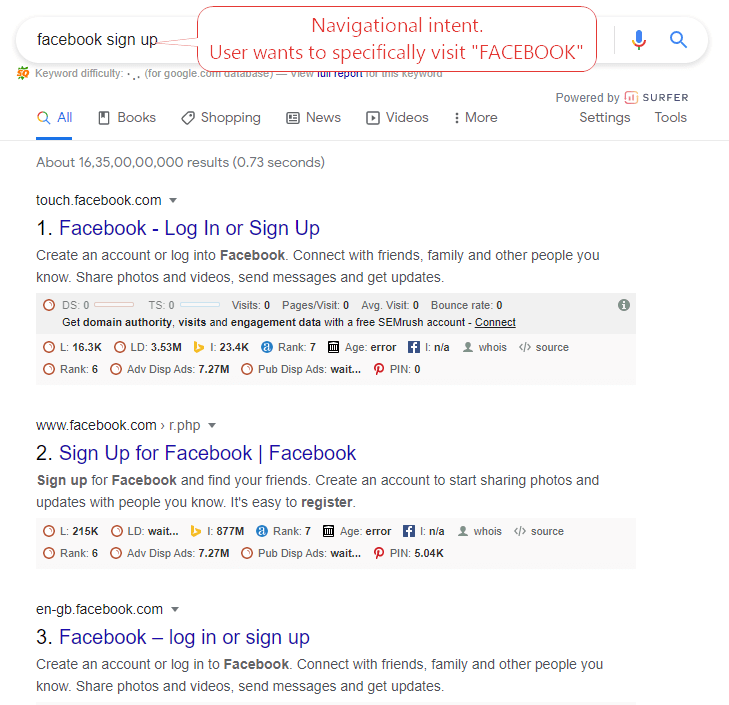
Transactional keywords are the keywords that bloggers & affiliate marketers love the most.
In this type of intent, use has prior information about a certain topic, product, service.
He/she is looking to buy that product after reading the review or comparing them with other products.
Here’s an example of a transactional intent keyword:
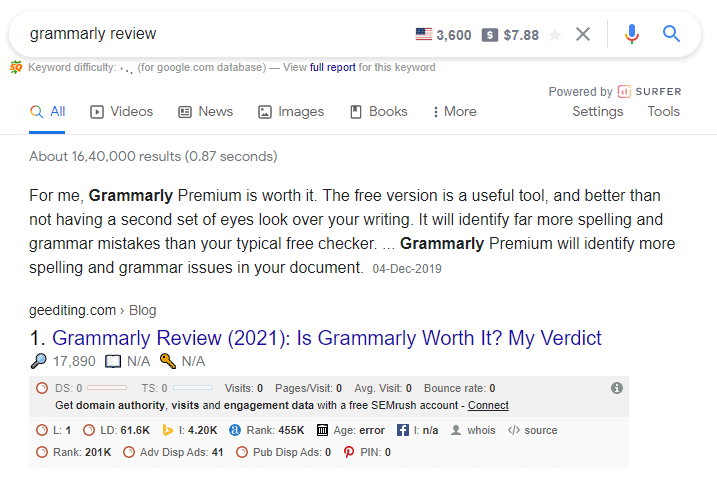
This is how the user intent works.
Let’s say you are a blogger and want to write on the keyword “how to play golf”.
Here you intend to learn about playing golf and not purchasing anything as of now.
Therefore, you should write and optimize the article accordingly.
User intent looks very simple and due to its simplicity, most of us get tricked by it.
Always remember, finding the correct user intent for the keyword is itself half work done.
Avoiding it will only harm your blog more.
Pro Tip: Never try to match the search intent by writing clickbait titles. Fortunately, it does not work anymore.
With that out of the way, let’s look at the next thing that you should avoid in blogging.
3. Targeting every niche
Back in the days when Google had only so much emerged, bloggers used to create a general blog around every topic and rank in Google.
But the same is not the case anymore.
It is nearly impossible to create a successful blog that talks about different topics.
Due to Google’s fewer ranking factors and fewer algorithm changes, it was very easy to rank on the top pages.
Therefore, smart bloggers like you and I start to create a blog on a mixed topic to gain more exposure.
When Google came to know about it, they said – “How can a single person be an expert in all subjects?”
Because of this, they came out with the E-A-T core update. EAT stands for Expertise, Authoritativeness, and Trustworthiness.
EAT ensure that the content ranking on the first page is trustworthy, reliable and should be written by the subject matter expert.
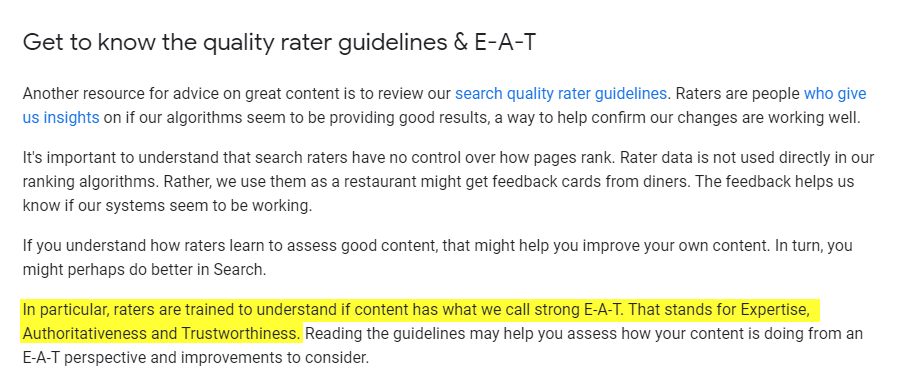
This helped Google ensure the optimum quality of the content of the top pages.
Besides Google, if you write on all the topics in a single blog, your readers will not trust you.
On the other hand, if you provide epic content in a single category, you will build a loyal audience that will stay with you forever.
4. Publishing articles every day
Every one of us wants to become a better blogger.
But for that, you need to come up with epic quality content.
And writing epic content takes time.
However, some so-called internet gurus will tell you to publish at least one article each day which equals 365 articles in a year (unless it is a leap year).
I am not against this strategy.
I just don’t believe it.
How can a person come up with a new keyword idea and write a long quality blog post every day (especially in the beginning)?
I have tried to follow this method and eventually end up feeling burnout and content deprivation.
Writing content each day is not a great option because there is already so much content out there.
In fact, each query has millions of searches in Google.
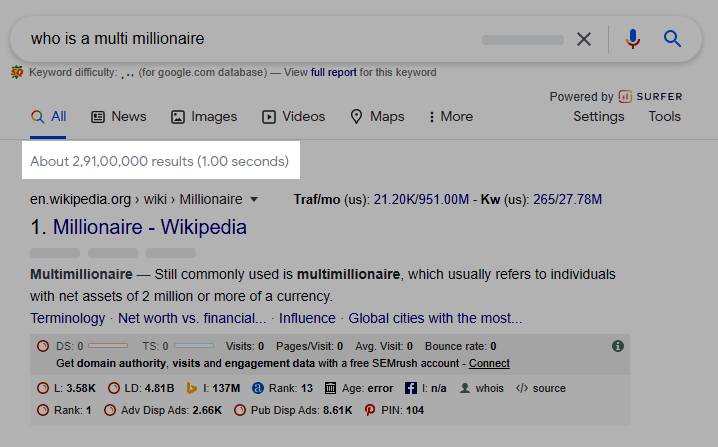
Google does not want more content. They rather want to replace thin content with quality ones.
Even if you write only a few articles a month, make sure that they are worth reading for generations to come.
These the some of the foremost things that you should dodge right off your brain.
P.S: I felt guilty when some of my friends were publishing articles every day and I wasn’t. Today, I feel proud of myself for not following them.
Indeed, this was one of the main things I wish I knew when I started blogging.
We recently published an ultimate checklist of 10 things that you should never do while blogging.
Have a look at that article from here to overcome major blogging mistakes.
Now, as you are aware of the blogging mistakes, let’s move on to some real-life examples of blogs that are thriving and making a fortune.
Proof That Blogs Make Money
The evidence is important. It spurs us to take action.
Let’s look at some of the blogs from different niches that are making a significant amount of money to confirm that blogging is not dead.
1. Making Sense of Cents

Michelle started Making Sense of Cents in her college days to keep track and write about her personal finances.
At that time, she had no idea about monetizing her blog.
But when she came to know about different revenue streams of blogging i.e. Advertisements, sponsorships, affiliate marketing, etc, then she started making a pretty good amount of money.
There was no looking back after that.
She has even created premium courses to teach people exactly how to start blogging and make money out of it.
Currently, it is estimated that she earns over $100K every month just from her blog.
There is a big lesson learned here: If she didn’t start a blog in her college days, she would have never realized the importance of the same.
Because college days are the days where you can get the most amount of free time to brainstorm about great ideas.
Michelle invested her time in learning about blogging which eventually changed her life positively.
She is even featured on some of the world’s top sites:

And also received the honor of one of the top independent finance bloggers in the world.
Note: The major portion of her blog’s traffic comes directly from Google (organic) and her favorite social platform to drive traffic is Pinterest.
2. Create and Go

Create and Go is a super successful blog created by a couple named Alex and Lauren.
I am personally a great fan of both of them.
In fact, I have learned many things from their blog as well as their YouTube channel.
They teach blogging the right way (just like I do 😛).
But this was not their first blog.
Before starting and making this a money-making money blog, they worked on a fitness niche and even failed their first health blog.
Just like Michelle, they earn a whopping revenue of over consistent $100K every month from their blog.
Their major source of revenue comes from their video courses and affiliate marketing.
For full transparency, they publish blog income reports every month. You can have a look at them from here.
These were only two examples. There are countless blogs around the blog making a destiny from their blogs and you can also be one of them.
Want to start a food blog or any other obscure niche? Go for it.
The only thing that you should keep in mind is to choose a niche that has money and demand.
According to Salary.com, the average payroll of a CEO is around $766,468 (as of now).
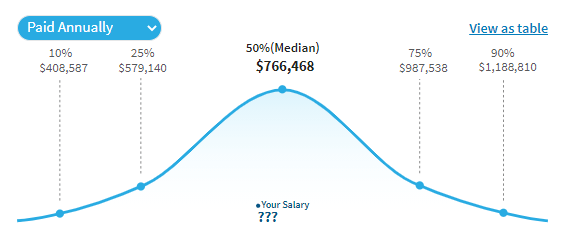
This depicts the power of income from blogging.
How can blogging die when people are substituting their jobs with it?
Once again, blogging is growing and evolving.
As I am saying this time and again, let me show you exactly how blogging is changing and how you should modify your strategies accordingly.
Blogging Is Evolving
There were days when online earning had no trace.
If someone would take about online earning, people would prove it to be fake or ask for proof.
But today, online businesses have changed many lives.
Every business (irrespective of its physicality) either worsens or evolves.
Similarly, as blogging is also a real online business, it is evolving.
When Justin Hall created the first blog on the internet in 1994, people came to know about blogging (Source).
But at that stretch, people used to pursue it as a hobby to jot down their day-to-day instances.
It was after the evolution of the internet industry when people realized that blogging has the potential to make money and in truckloads.
Currently, people rarely blog as a hobby.
This is how blogging has progressed.
With this evolvement came the new responsibilities. As the content was increasing, Google became stricter in terms of quality and blogging policies.
“The plain text does not please readers anymore. “
Blogging is not limited to writing anymore.
As a blogger, you need to look into all sorts of things such as writing an excellent blog introduction, SEO, heading tags, and even ending a blog post the right way.
Out of many important steps to consider, let me walk you through some of the major ones that you should adopt from today itself.
1. Storytelling
Writing blog posts faster and generating a ton of content each day worked well back then.
Today, you need what I call an INFLUENCE to make your content reader-friendly and engaging.
In this world full of distractions, it is easy to get lost.
To keep your audience on your articles for a long time, you need to write content in the form of storytelling.
Storytelling is used almost everywhere and in all forms of writing.
Luckily, it exists since the creation of the universe and will possibly never die.
As humans, we like to hear stories.
Also, stories are very easy to relate to and remember.
Storytelling doesn’t require any degree to master it. All you need to do is to document your life’s astounding instances.
Storytelling is not difficult if you focus on writing for your readers first and then for the search engines.
2. Publishing multiple content formats
As discussed earlier, you cannot please your readers only with the plain text of blocks that look boring.
You need to blend into different content formats and see what’s working for you.
Many formats can be used together.
You can use various media formats, for example, in your blog post.
Some of the top ones are:
- Attractive images
- Infographics
- PDF version of a blog post
- An eBook
- An embedded YouTube video
- A podcast (or an audio version of your article)
And so forth.
Brain Dean of Backlinko is the best example of using multiple content formats in a single format.
In some of his definitive guides, for example, he gives the option to download the PDF file for the blog post to read it offline.
Similarly, you can try to improve the design of your blog post by breaking the paragraphs into pieces and using bullet points that are easy to scan.
The cleaner your blog looks; the more trust it will build.
Just be sure to implement various content frameworks to gain maximum benefits.
3. Blog as a business
If you are serious about earning more from blogging, you need to treat it as a business.
By business, I mean that you will have to put three main things into it:
- Time (Daily)
- Efforts (Daily)
- Money (Initially)
You will need to put countless hours into SEO, building connections with other bloggers, backlinks, keyword research, content promotion, and much more.
But it will all pay off.
Branding your blog is an essential element for building your own loyal ecosystem.
If you have a faithful audience, you can send traffic to your blog anytime you want.
If you are looking for proven and actionable steps in branding your blog, then you can have a look at this guide for reference.
4. Creating your ecosystem
I recently discussed the importance of building your ecosystem.
Why is an ecosystem important?
In simple terms, you cannot rely on a single traffic source. Social media is pressing more and more on paid ads.
Facebook, which was one of the biggest organic traffic providers, is now focusing more on paid ads.
SEO takes time to rank your article and even after raking high, there is a high risk of someone else dominating your article in months if not years.
In this case, it is harder than ever to get consistent traffic. That’s why we need a loyal ecosystem for support.
So, how to build this ecosystem?
The best thing is to establish an email list. Your email subscribers are your customers.
By providing valuable eBooks, printable, email courses, etc for free, you can collect their emails.
After collecting their emails, you can do whatever you want to with that email. But the best thing to do is to nurture them and then pitch promotions in between.
Like this, you are building a devoted following in which you have total control.
5. Keep updating old content
Last but not least, you should keep updating your old content if you want to rank for your keywords for decades.
Google loves fresh content.
And that is the main reason why the “freshness index” is one of the top-ranking factors.
Unfortunately, only 38% of people are updating their old content.
It may seem tiresome to go back to each article make changes.
No, you do not need to do it for all.
You need to perform this task in the articles that are not ranking on top pages.
I bet you will see significant changes in organic rankings after updating old blog posts.
In fact, one of my articles jumped from 45th position to 10th position in Google just by adding a few paragraphs and updating it.

Pro Tip: If the article does not rank after 5-6 months of publishing it, tweak in few relevant changes.
What Do You Think?
This was the definitive guide on whether blogging is dead or not.
And the obvious answer to is blogging dead is: “no, blogging is not dead”.
It is growing and you also need to develop according to its obligations.
And if you follow all the strategies that are listed here, then you will see flying colors in blogging.
Adopting the right strategies and changing them according to the requirements is all you need to succeed as a blogger.
Hopefully, you learned something new from this guide.
If you have read this article and are ready to start a blog, then you can go through this ultimate blog launch checklist to set up and launch an exceptional blog step-by-step.
Now, I would like to hear from you.
Which specific or general point did you find useful from this guide?
Also, did I miss covering something truly important?
Either way. Let me know by leaving a comment below right now.

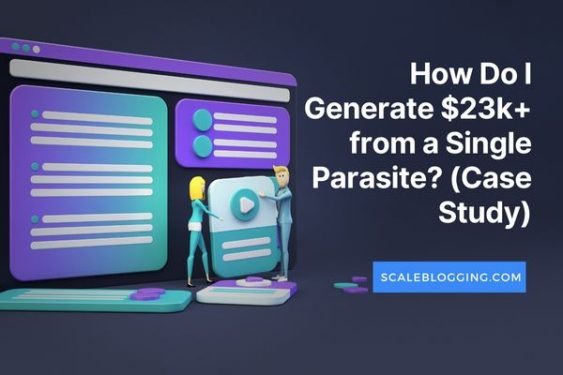





Hi Dhruvir,
Google genuinely wants you to target 1 niche to be a specialist, not a generalist. Multi-niche blogs are as dead as door nails. Do 1 thing to do it well and Google will give you authority in that niche.
Ryan
Well said, Ryan.
I am a great believer in building a single niche blog. In the future, one can indeed expand our category once we run out of content ideas in our primary niche.
Thank you for reading it, brother.